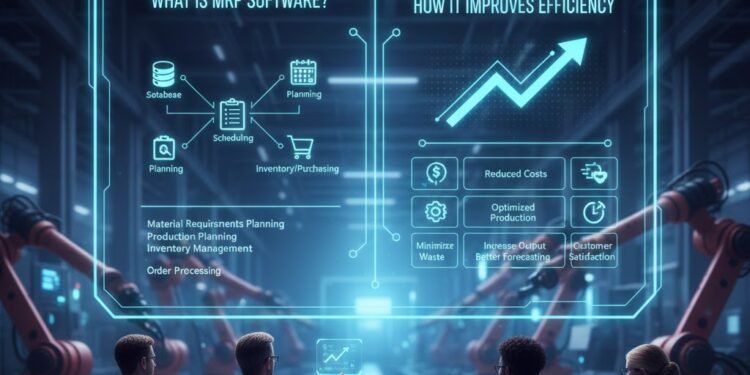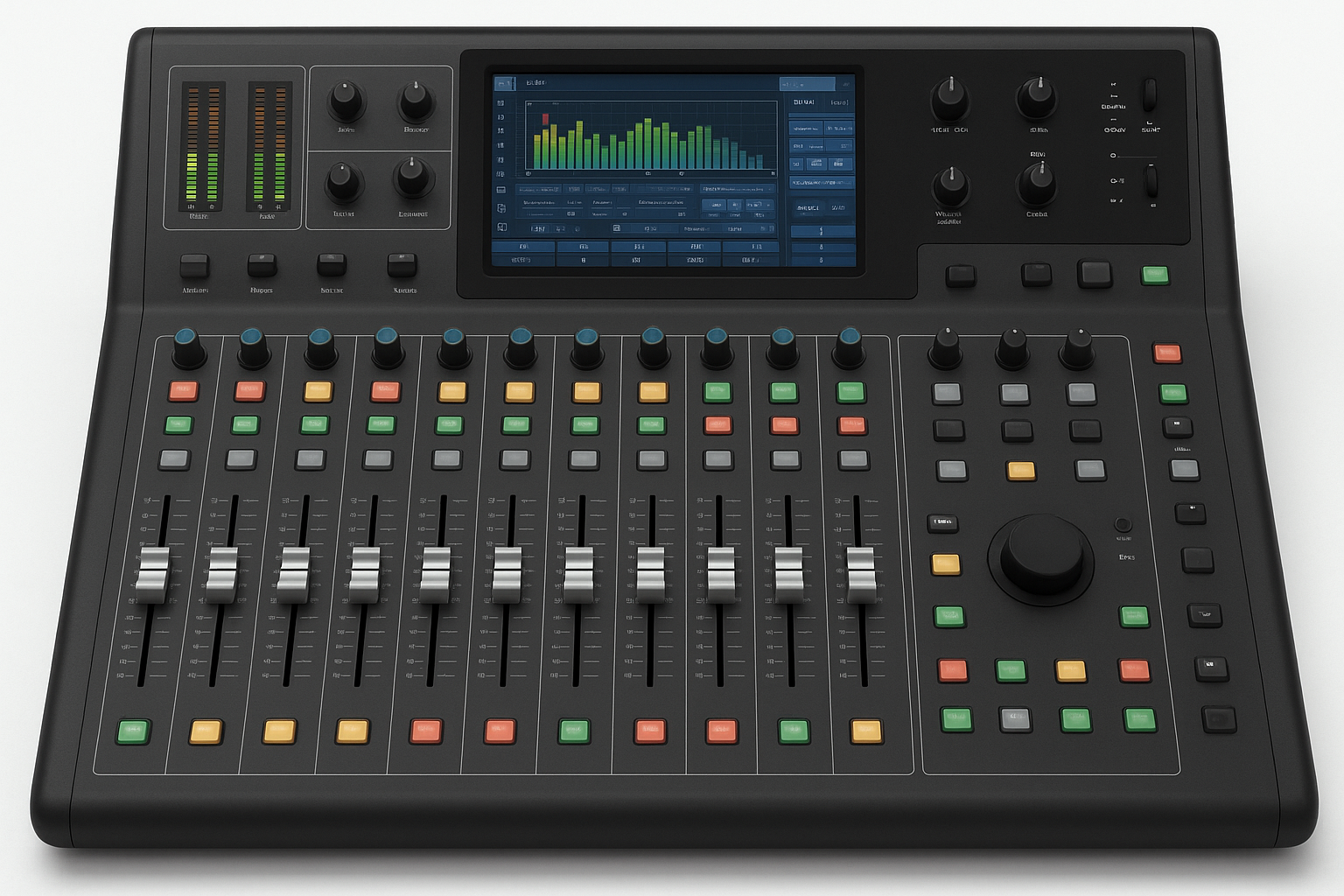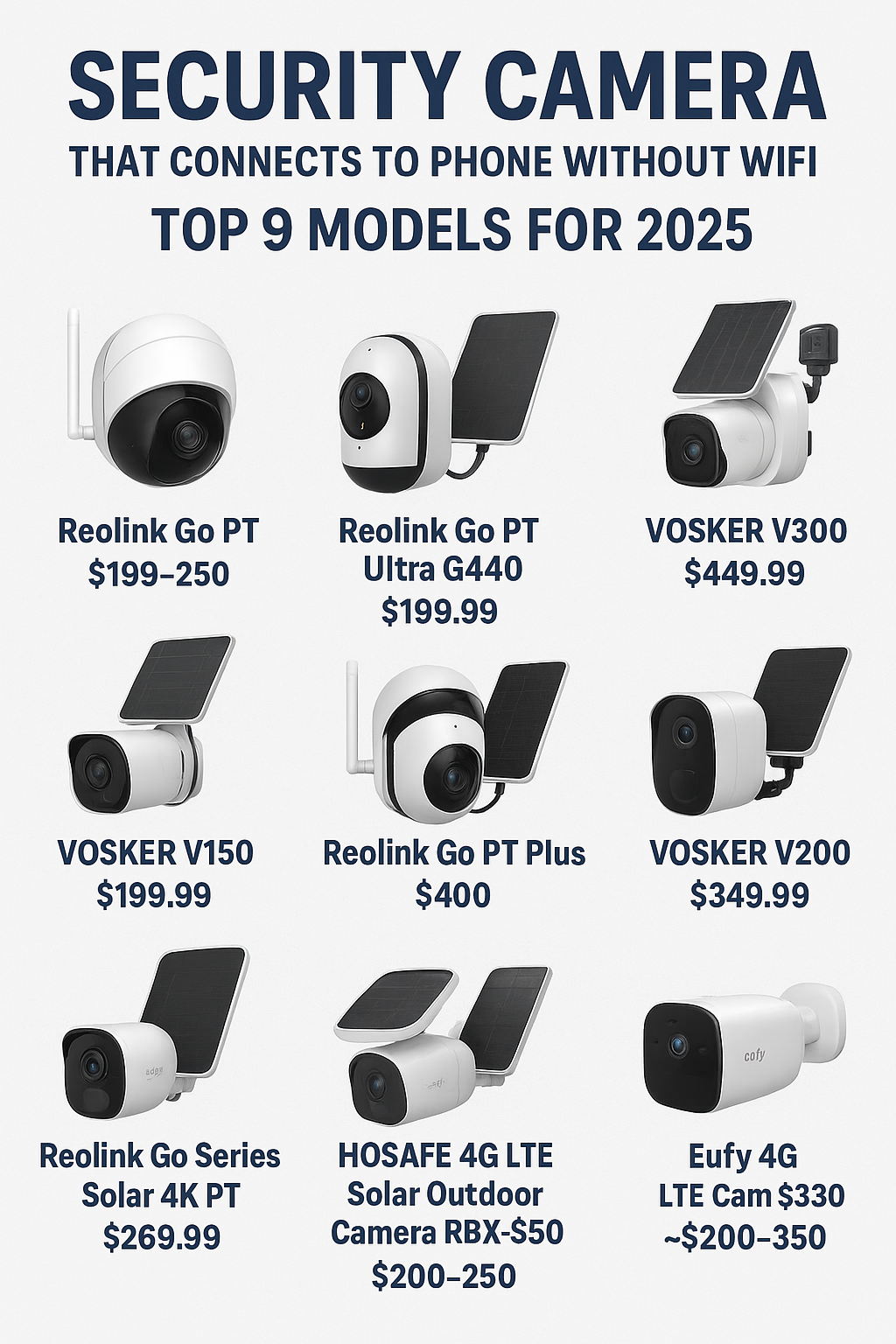In today’s fast-paced industrial world, manufacturers must balance efficiency, cost-effectiveness, and productivity to stay competitive. MRP software (Material Requirements Planning software) has become one of the most valuable tools in achieving this balance. It helps organizations plan, schedule, and manage production processes with precision—reducing waste, optimizing resources, and ensuring products are delivered on time.
This article explains what MRP software is, how it works, why it’s essential for modern manufacturers, and how it differs from ERP systems.
Understanding MRP Software
MRP software is a production planning and inventory control system used to manage manufacturing processes. It ensures that materials and products are available for production and delivery by calculating what materials are needed, how much, and when.
At its core, MRP software focuses on three primary objectives:
Ensuring materials are available for production and products are available for delivery.
Maintaining the lowest possible inventory levels.
Planning manufacturing, delivery, and purchasing activities efficiently.
The system works by taking input from three main sources:
Bill of Materials (BOM) – A detailed list of raw materials, components, and assemblies required to build a product.
Master Production Schedule (MPS) – A plan showing what products are to be made and when.
Inventory Records – Current data on materials and parts available in stock.
Using these inputs, MRP software calculates material requirements and schedules production accordingly. It answers critical questions like “What do we need?”, “When do we need it?”, and “How much do we need?”
How MRP Software Works: The Step-by-Step Process
Demand Forecasting
The system begins by analyzing demand from sales orders or forecasts. This helps determine how much of each item must be produced.Bill of Materials (BOM) Explosion
The software breaks down the final product into its individual components, subassemblies, and materials—identifying exactly what’s needed for production.Inventory Check
It compares the required materials against what’s already in stock, highlighting shortages and determining what needs to be ordered.Scheduling and Procurement
Based on demand and material availability, MRP software schedules production runs and automatically generates purchase orders for raw materials.Capacity Planning
The system checks machine and labor availability to ensure that production timelines are realistic.Execution and Feedback
As production progresses, the system tracks updates, monitors delays, and adjusts future schedules automatically.
Through this structured workflow, manufacturers can significantly reduce bottlenecks and improve output efficiency.
Key Benefits of MRP Software
Reduced Inventory Costs
One of the biggest advantages is minimizing overstocking and understocking. By accurately forecasting material needs, manufacturers save on storage and reduce waste.Improved Production Planning
MRP systems provide clear visibility into production schedules, helping teams plan tasks more effectively and avoid idle time.Timely Deliveries
With better coordination of materials and schedules, companies can ensure products are manufactured and shipped on time—leading to higher customer satisfaction.Enhanced Resource Utilization
The software optimizes labor and machine allocation, ensuring that resources are neither overused nor underused.Informed Decision-Making
Real-time data reporting enables managers to make strategic decisions quickly, such as adjusting production levels or ordering additional materials.Greater Traceability
MRP systems track every stage of the production process, providing transparency and accountability in case of errors or delays.
MRP vs. ERP: What’s the Difference?
A common question is how MRP software differs from ERP (Enterprise Resource Planning) systems. While they share similarities, their scopes are distinct.
| Feature | MRP | ERP |
|---|---|---|
| Focus | Manufacturing and inventory management | Entire organization (finance, HR, sales, etc.) |
| Functionality | Material planning, scheduling, and production control | Integrated business management including MRP |
| Implementation | Ideal for small to mid-sized manufacturers | Suitable for large enterprises |
| Cost | Generally lower | Higher due to broader coverage |
In short, MRP is a subset of ERP. Many ERP systems today include an MRP module to handle production and material planning, making them a complete solution for manufacturers.
How MRP Software Improves Manufacturing Efficiency
Streamlined Production Workflow
MRP systems eliminate manual spreadsheets and disconnected tools by automating every stage of production—from procurement to delivery.Accurate Material Forecasting
Forecasting errors can lead to stock outs or surplus. MRP software uses historical data and demand analysis to ensure accurate material ordering.Reduced Downtime
With efficient scheduling and visibility, companies can minimize machine idle time and workforce delays.Faster Response to Market Changes
If demand suddenly increases or supply chain disruptions occur, the software recalculates schedules instantly—allowing quick adaptation.Quality and Compliance
Many MRP systems include quality control modules that ensure every batch meets industry standards and compliance requirements.Cost Reduction
Better planning means fewer rush orders, lower inventory holding costs, and reduced waste—all contributing to improved profitability.
Future Trends in MRP Software (2025 and Beyond)
The evolution of MRP software continues with the integration of new technologies:
AI and Machine Learning: Predictive analytics are enhancing demand forecasting accuracy.
Cloud-Based Systems: Easier accessibility, scalability, and real-time updates for global teams.
IoT Integration: Real-time data from connected machines improves scheduling precision.
Sustainability Focus: Systems are now optimizing for minimal material waste and energy use.
These advancements are transforming how manufacturers operate, moving from reactive planning to proactive optimization.
Common Challenges with MRP Implementation
While MRP software offers substantial benefits, it’s not without challenges:
Data Accuracy: Incorrect data can lead to flawed schedules and stock issues.
Training Requirements: Employees must be trained to interpret and use reports effectively.
Integration Complexity: Connecting MRP with other business systems can be complex without proper planning.
However, with correct setup and management support, these challenges can be overcome easily.
People Also Ask
1. What is MRP software?
MRP software (Material Requirements Planning) is a digital tool used to manage manufacturing processes by ensuring materials are available for production while minimizing excess inventory.
2. What is an MRP vs ERP?
MRP focuses on production and material planning, whereas ERP covers the entire organization, including finance, HR, and customer management.
3. What is the best MRP software?
The best MRP software depends on your business size and needs. Popular options include Katana MRP, MRPeasy, and SAP Business One for manufacturers seeking scalability and real-time visibility.
4. What is MRP strategy?
An MRP strategy defines how a company plans its material requirements—balancing supply and demand while optimizing production schedules for maximum efficiency.
Conclusion
In 2025, as manufacturing becomes more complex and data-driven, adopting MRP software is no longer optional—it’s essential. It enables manufacturers to align resources, improve planning accuracy, and boost overall productivity.
Whether you’re managing a small production unit or a large factory, implementing MRP software can transform your workflow, eliminate inefficiencies, and ensure that your products are always delivered on time and within budget.







